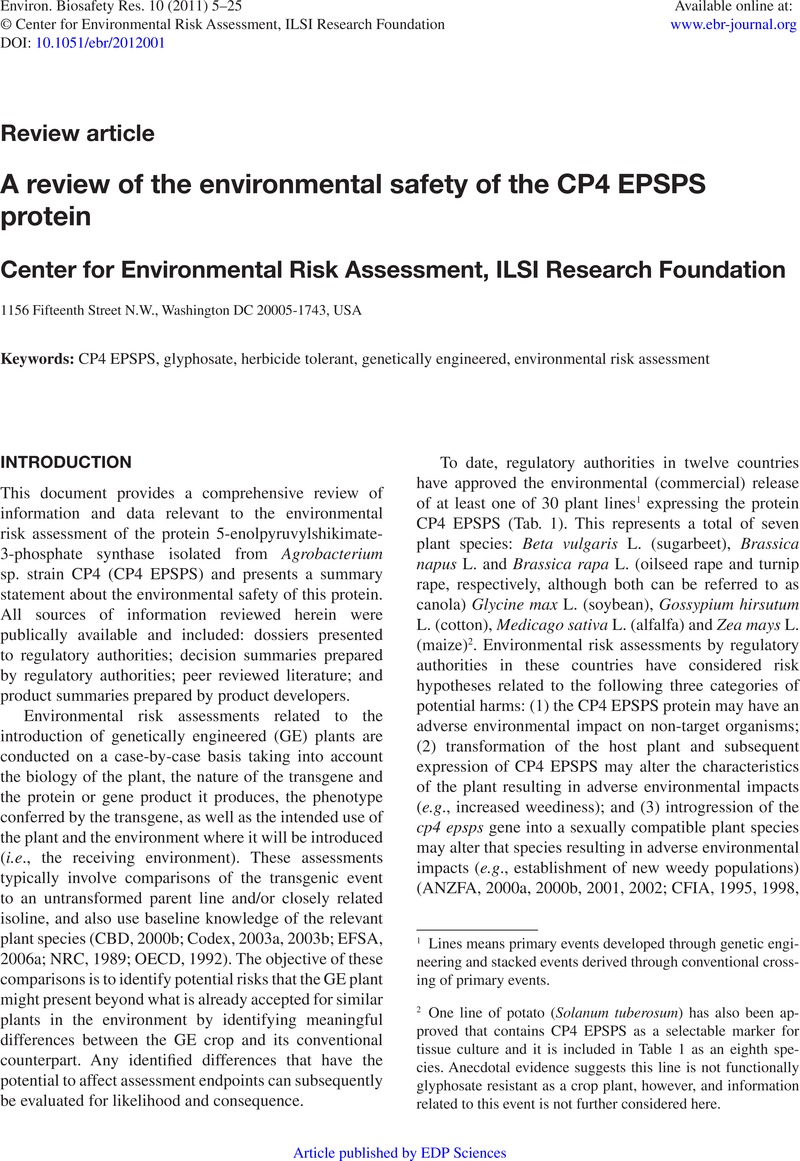Crossref Citations
This article has been cited by the following publications. This list is generated based on data provided by Crossref.
Li, Shun-Xing
Chen, Li-Hui
Zheng, Feng-Ying
and
Li, Yan-Cai
2013.
Effect of the cp4-epsps Gene on Metal Bioavailability in Maize and Soybean Using Bionic Gastrointestinal Tracts and ICP-MS Determination.
Journal of Agricultural and Food Chemistry,
Vol. 61,
Issue. 7,
p.
1579.
Roberts, Andrew
Devos, Yann
Raybould, Alan
Bigelow, Patrick
and
Gray, Alan
2014.
Environmental risk assessment of GE plants under low-exposure conditions.
Transgenic Research,
Vol. 23,
Issue. 6,
p.
971.
Horak, Michael J.
Rosenbaum, Eric W.
Kendrick, Daniel L.
Sammons, Bernard
Phillips, Samuel L.
Nickson, Thomas E.
Dobert, Raymond C.
and
Perez, Tim
2015.
Plant characterization of Roundup Ready 2 Yield® soybean, MON 89788, for use in ecological risk assessment.
Transgenic Research,
Vol. 24,
Issue. 2,
p.
213.
Horak, Michael J
Rosenbaum, Eric W
Phillips, Samuel L
Kendrick, Daniel L
Carson, David
Clark, Pete L
and
Nickson, Thomas E
2015.
Characterization of the ecological interactions of Roundup Ready 2 Yield® soybean, MON 89788, for use in ecological risk assessment.
GM Crops & Food,
Vol. 6,
Issue. 3,
p.
167.
Devos, Yann
Ortiz-García, Sol
Hokanson, Karen E.
and
Raybould, Alan
2018.
Teosinte and maize × teosinte hybrid plants in Europe−Environmental risk assessment and management implications for genetically modified maize.
Agriculture, Ecosystems & Environment,
Vol. 259,
Issue. ,
p.
19.
Raybould, Alan
2020.
GMOs.
Vol. 19,
Issue. ,
p.
305.
de Aguiar, Adalin Cezar Moraes
Alberto da Silva, Antonio
Mendes, Kassio Ferreira
and
da Costa Lima, Alessandro
2022.
Applied Weed and Herbicide Science.
p.
255.
Park, Seong-Cheol
Lim, Hye Song
Mun, Seong-Eun
Jung, Young Jun
Yoon, A-Mi
Son, Hyosuk
Kim, Chul Min
Choo, Young-Kug
and
Lee, Jung Ro
2023.
Potent Antifungal Functions of a Living Modified Organism Protein, CP4-EPSPS, against Pathogenic Fungal Cells.
Molecules,
Vol. 28,
Issue. 11,
p.
4289.



